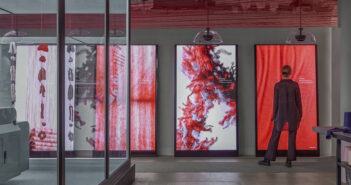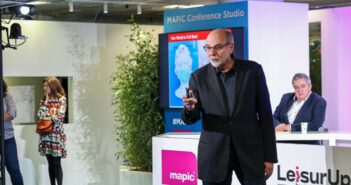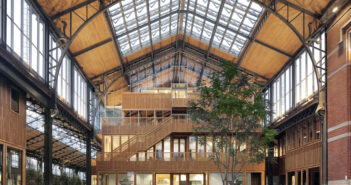The Digital platform for MAPIC and LeisurUp hosted the second of two live days today, Wednesday 18 November, packed with a series of presentations, lively panel discussions, a master franchising event and a special focus on opportunities in the Italian retail market. While day two continued to examine the key MAPIC themes, there was a major emphasis on innovation across digital channels, through retail transformation and reinvention and by regenerating cities sympathetically to create inclusive, mixed-use neighbourhoods.
Key themes: Five must-read highlights from MAPIC and LeisurUp Digital Day Two
COVID-19 has emphasised and accelerated many of the long-term, structural changes happening across retail, leisure and F&B. The common consensus is that we will not return to the pre-pandemic era and, instead, the market will be reshaped to meet new consumer expectations and priorities.
Cities, lifestyle destinations and stores will need to adapt and the future will be firmly focused on those players who can innovate, embrace digital across all their channels and pick the right partners and collaborations to redefine their offer.
- Core and more: Retailers must stay relevant but evolve into new areas
- Online brand experience: COVID has reshaped experiences across channels
- Partner right: Franchising is less about brands and more about ethos and mind-set
- The innovation generation: The market won’t return to pre-COVID models and online and offline need to learn how best to co-exist
- Cities for everyone: Urban regeneration needs to create and improve neighbourhoods for everyone
(Re)building the next retail generation – Part 1
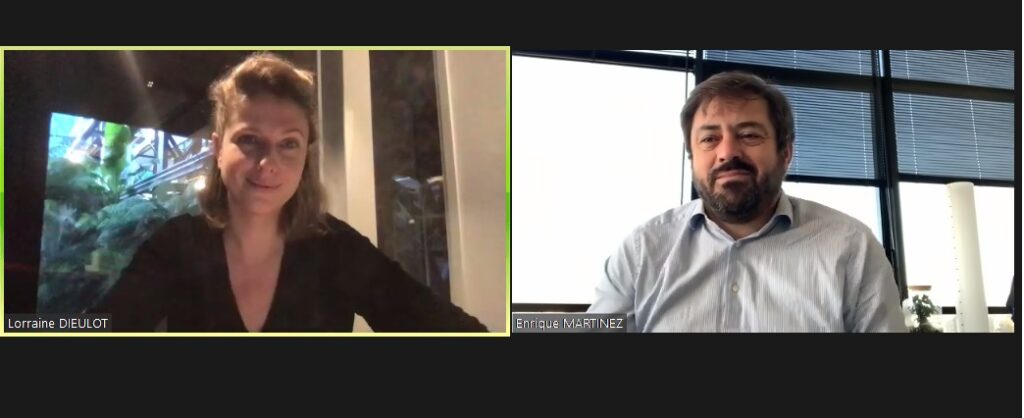
Enrique Martinez, CEO of Fnac Darty, laid out a plan to ensure his technology-to-appliances business remained a market leader and relevant to all customer ages and attitudes in his address to MAPIC Digital. “We want to be more than market leaders…we used to talk about category killers but we need to be the best choice as a specialist. We create the eco-system around this,” he said.
Martinez said that the challenge for the business is ensuring that it evolves its offer while remaining strong in its core product categories. “From time to time we move on in terms of product diversification, keep faithful to our offer but add things that help,” he said. “There are some core markets that are top-of-mind for customers. If you want a PC, you will come to Fnac. For appliances, Darty. We keep our main focus on these core categories. But what we ask the customers is what they expect from Fnac Darty in the future, for us to remain as a contemporary brand. To pass a message to the customer that they can come to Fnac just to discover the trends. This is part of our mission, to be one step ahead of society.”

Mixed use retail and leisure: What happens next? – White Paper
He did, however, express concerns about the evolution of towns and cities. Around half the Fnac stores are located in city centres and he said the company is “quite worried about the lack of activity”, which he put down in part to restrictions such as parking and Sunday trading rules.
“It’s a big challenge,” he said. “How can we come back to making the cities interesting for retailers? Sunday trading [restrictions]are totally crazy, so Sunday is a digital day. It’s incoherent. We need incentives for small and medium sized retailers to engage in the city, which we would encourage because we are already there.”
“A company like us has the ability to drive traffic from digital to physical. This is quite rare and we can use to gain new traction from customers, back in the physical world,” Enrique Martinez, Fnac Darty
(Re)building the next retail generation – Part 2
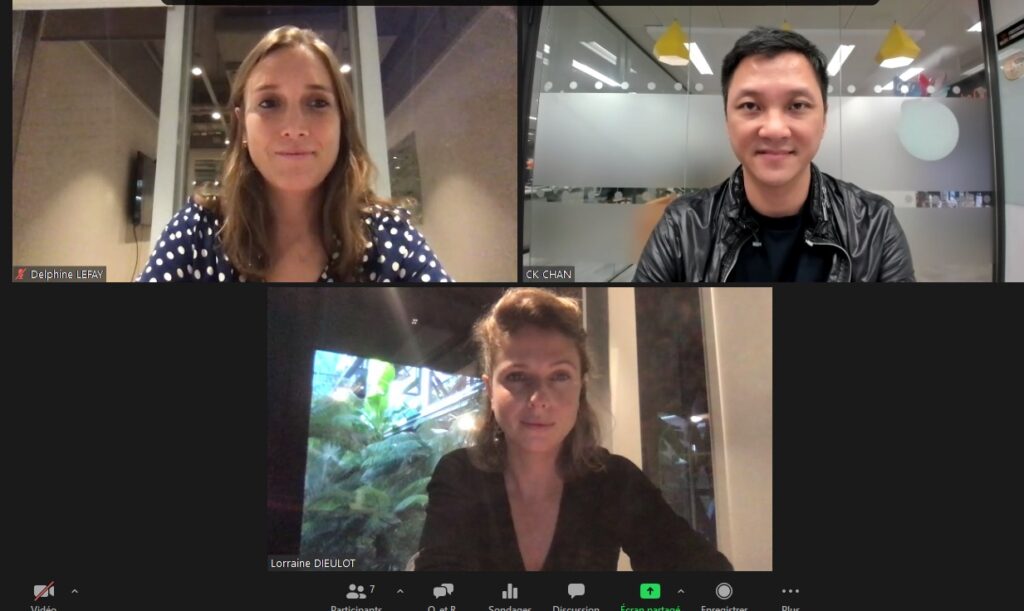
With Asia the undisputed leader in digital innovation and consumer adoption, this ‘next generation’ session focused on some of the key trends as retailers and brands navigate their path through an increasingly blurred online and offline world.
CK Chan, head of Tmall and Taobao, Hong Kong and Macau, Alibaba Group, stressed that incoming brands to the Asian markets want to offer “experiences to the customer” and said: “If we want to further expand, we need to work with and embrace offline retail in a more collaborative manner. Merchants driving the business is not good enough, we need to bring in other players like content creators. We see that trend, not just in China, but in the world as well to enlarge the ecosystem for the whole industry. We will change to more content creation.”
One such example is live streaming, which has been a way to reach customers during lockdown. “We have seen this double year on year,” said Chan. “Customer behaviour is more adapted to online and live streaming and we see that speeding up. Previously companies needed to open stores to create brand experiences for the customer. Now they can do that online and the audience is much wider. We see that trend speeding up.”
One such example is online player On The List and Delphine Lefay, CEO and co-founder, admitted “profitability wasn’t the first thing we were thinking of in Asia when we opened a first store”, because of the expense, but that it was about “experience…to try on the fashion.”
In terms of innovation, as a members-only business, people currently have to show their QR code to enter a store but the company is looking to make this easier with facial recognition, so that after being photographed the first time, when they return they are directly recognised. She added: “The future will be O2O.”
“Our strength is in our community and so we really try and work on this community to make them loyal,” Delphine Lefay, On The List
Multi-unit & master franchising networking event

A session that encompassed an introduction to the world of franchising and then moved into a series of speed pitches in breakout rooms, started with operators from food & beverage and furniture discussing their very different sector experiences of the COVID trading period.
Michael Linander, chief retail officer, Boconcept, said that even pre-crisis the company had seen a distinct trend towards people spending more time in their homes, and therefore investing more in them.
“There was already a shift driven by insecurity in the world,” he said. “COVID-19 is just an accelerator. Now it has just gone crazy.”
However, he said that success in the franchising world currently is about more than just choosing a strong category and instead is about looking at the fit between brand and operator. “If we look beyond the industry, the key thing is to find the right partner with the right ethos and purpose. Find a franchisor that has the right know-how. That very much determines how we will get through this,” he said. “The foundation of a partnership is purpose, team and a good spirit. A shared mind-set.”
Not surprisingly, Eric Wauthier-Wurmser, international director, Groupe Le Duff, had experienced a very different COVID period and foresaw more tough times ahead while a vaccine programme is awaited: “From what we know, the first three months of 2021 might be difficult. We hope that spring might bring back a more normal situation,” he said.
Wauthier-Wurmser said that the group had tackled the crisis by playing to its broader strengths. “We are not only restaurant operator, but also a factory producer, selling food worldwide in a multi-channel environment. So they have been very agile to adapt production and respond to what is needed around the world,” he explained. “We have this agility everywhere around the factories and the retail, which has kept us resilient.”
“The foundation of a partnership is purpose, team and a good spirit. A shared mind-set,” Michael Linander, Boconcept
Think physical retail, think different
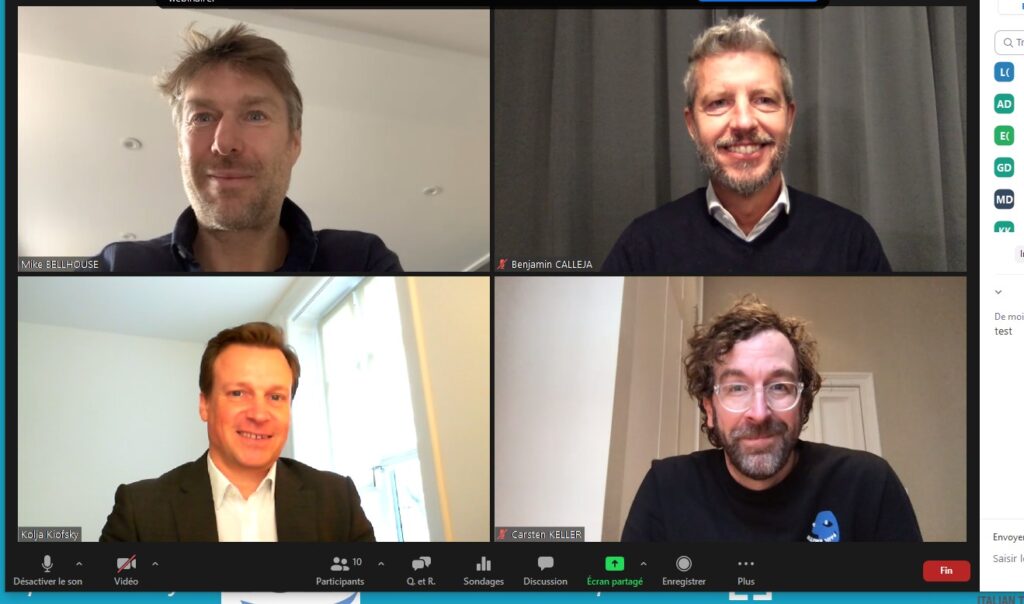
The ongoing question of how online and offline can work together and exactly where the synergies may lie was examined by a diverse panel that included a retailer, online player and F&B specialist.
“We clearly see that customers want to shop. In many of our markets we have seen a rebound,” said Kolja Kiofsky, senior VP global retail management, Swarovski, of the response in markets that have been able to reopen. “We see very little cannibalisation [between online and offline]…The customer still shops with us but, all-in-all, the direction that we were heading in has accelerated and that is ultimately benefitting the customers.”
Carsten Keller, VP direct-to-consumer, Zalando, added that innovation in how channels work together is also being spearheaded by platforms such as Zalando which, in the “near future” is to introduce click-and-collect. “We believe this change in availability and sustainability is a win-win-win for customers, retailers and Zalando,” he said, while noting a huge upshift in demand during lockdown, with new customer acquisition “skyrocketing”.
“But this whole element of ‘am I more here or there with online and offline?’ will change. A lot of customers will expect online benefits, and that online customers experience the benefits of offline which are clearly there,” he said.
Benjamin Calleja, CEO & founder, Livit Design added that: “Restaurants are not very different from retail. The same amount of disruption is happening. A lot of restaurants have had to move to our [the sector’s]version of e-commerce. Really understanding how to quickly pivot, how to change. As markets open up, there is a pent up demand, but a pent up demand for experiences. At the moment you are either on the experience or the convenience side.”
“When restaurants open up, online is not going to disappear. So we now need to think how we live together,” Benjamin Calleja, Livit Design
Reshaping urban landscapes to be fit for the future

Urban regeneration is at the heart of many mixed-use schemes, with a new emphasis on creating places that are attractive locations to live, work, shop and play, while services are accessible and close to the population. And that approach linked four very diverse projects featured in this session.
Ekaterina Kirichenko, concept and customer experience director, Ingka Centres, discussed Kings Mall in Hammersmith, London, which is to be revamped as the company’s first urban community centre.
“People are searching for urban and convenience. It’s so important that they find everything they need in the neighbourhood,” said Kirichenko. “Ingka Centres is starting a new generation of urban centres anchored by IKEA. It really goes far beyond retail.”
Likewise, Synnove Lyssand Sandberg, CEO, Oslo S Utvikling, presented the large scale Bjorvika redevelopment on the waterside of the Norwegian capital. “The project includes offices, residential and ground floor retail, plus cultural buildings,” she said. “The mix is crucial. We also developed many open spaces for play, sports, gardens and restaurants. It is about an urban, active lifestyle.”
Architect Joan Busquets, professor GSD, Harvard University, spoke up on behalf of traditional neighbourhoods and stressed: “Old towns are places we need to keep active as a piece of the city,” he said. “It’s about helping places become real cities where people live, shop and have culture, and are not just for tourists. We also have to avoid gentrification, focusing on just one part of the economy.”
Joao Cepeda, president and creative director, Time Out Market, added: “Everything is very much about content. What we are trying to do is pick up these ideas of mixed use and bring them to smaller companies that can activate them in a single place. I think inevitably this is the future. A lot of people are trying to resist it…but the key is to bring these sides together.”
Finally, Ricardo Veludo, councillor urban planning, Lisbon City Hall, lauded urban regeneration as a “good solution for sustainability”.
“Part of this is housing affordability, we want to deliver liveable neighbourhoods, neutral carbon but curated because otherwise we have beautiful places without a soul,” he said. “We really need to have a smart attitude towards the cities and design the cities for everyone.”
“It is always the key; what type of content are we bringing to each corner of the city?” Joao Cepeda, Time Out Market
Italy Forum: Never stop, what’s next…
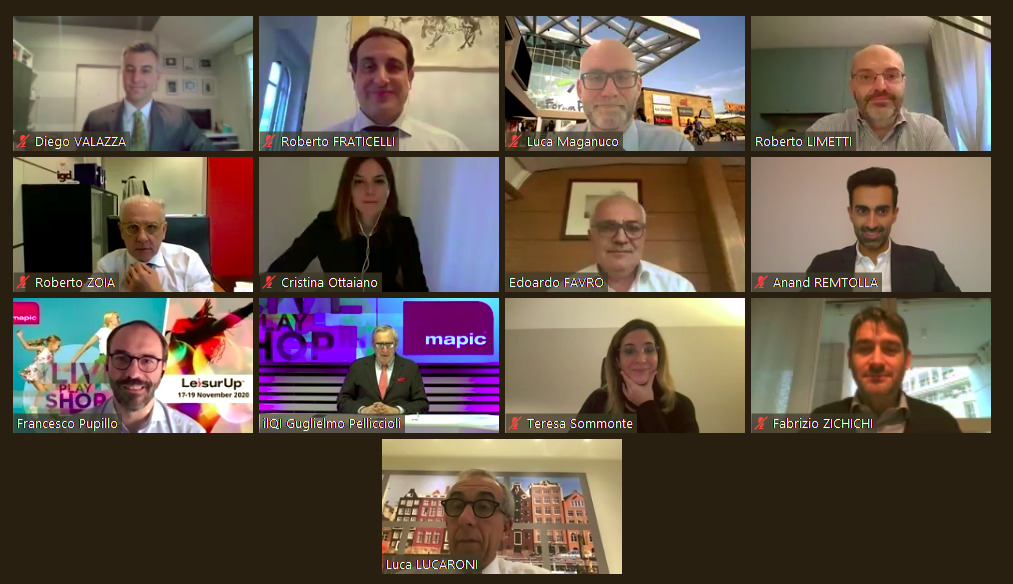
The final session of MAPIC & LeisurUp Digital was the Italy Forum, featuring many of the most influential decision-makers in the Italian retail and retail property market. Industry body CNCC focused on showcasing new, refurbished and extended retail real estate projects in Italy, before participants enjoyed a networking session.
Despite the challenges this year, the speakers remained upbeat in terms of a strong comeback for the retail sector.
“The health crisis has shown how shopping centres are considered as important places to meet and socialise. There is no doubt that the recovery of the property retail sector in Italy will be extremely rapid as was the case in the June-September quarter,” said CNCC president Roberto Zoia. “The consumer’s need for social interaction leads us to view the future with confidence.”
Meanwhile, investment in the Italian retail property market remains strong, although a higher proportion of the capital is now coming from domestic players, according to Cristina Ottaiano from Invest in Italy.
“International capital has always played a key role in the development of the commercial real estate market in Italy,” she said. “The health crisis generated a more wait-and-see attitude on the part of international investors but this was offset by a very positive reaction from Italian investors.”
Day two snapshot
The second day of MAPIC & LeisurUp Digital focused heavily on how retail, leisure and food & beverage models will need to adapt, because long-running trends, accelerated and accentuated by the COVID period, are here to stay. Despite promises of a vaccine, many operators predicted a tough period until spring 2021 but – with light at the end of the tunnel – the central message was live and let live, with physical facing a bright future if it can integrate the best of digital.
The suite of on-demand webinars available on the MAPIC and LeisurUp Digital platform will remain in place until the end of 2020, with the live sessions added to MAPIC’s extensive library of on-demand content. Additional interviews and analysis will also be available across MAPIC’s content channels and social media.


